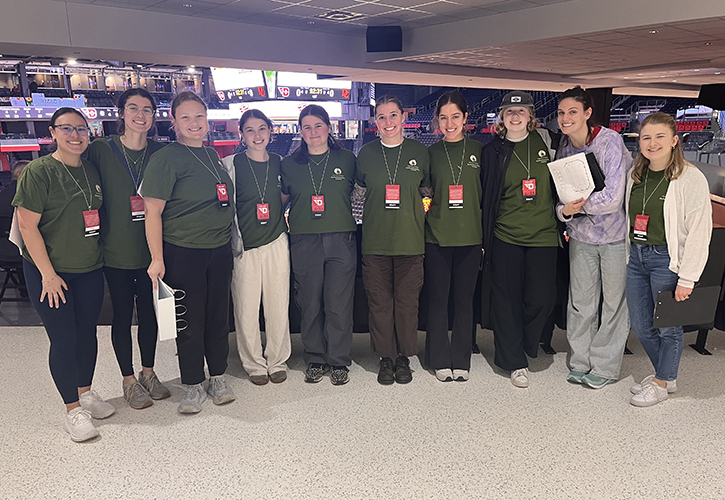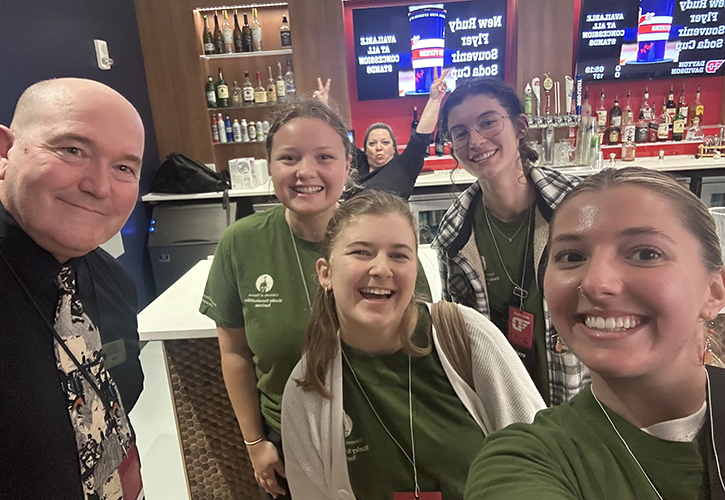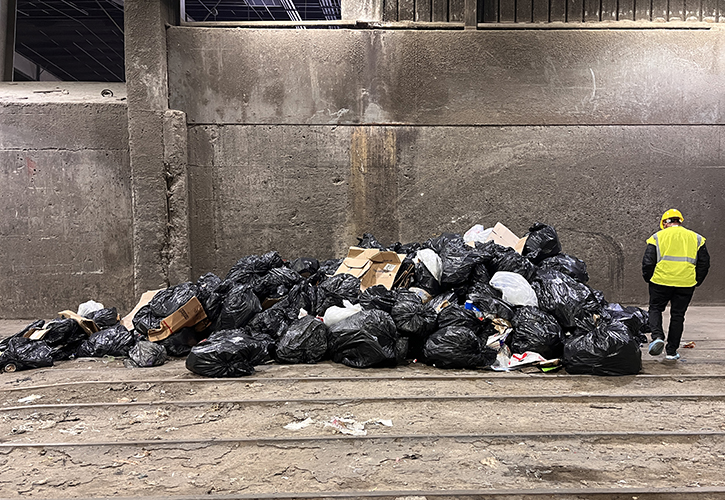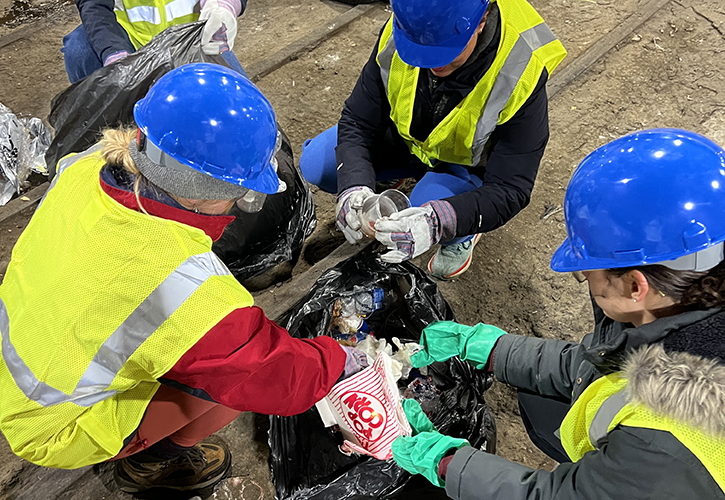Hanley Sustainability Institute

HSI, Office of Energy and Sustainability take longer look at UD Arena waste
By Libby Bornhorst and Georgia Popovic-Ita
The University of Dayton Arena is a place for generations of Flyers and fans to come together to cheer on the basketball teams. If you've ever been to a home game, you may have personally experienced the radiant energy and excitement.
Aside from the game, one of the most amazing aspects of a live sporting event is the food. Snacks and drinks, including soft pretzels, nachos, hot dogs, soda pop and beer, are available on every corner. These quick snacks create a lot of waste, and if you have ever seen the stands after the game, you may have caught a glimpse as to how much trash is left behind.
This year, the Hanley Sustainability Institute (HSI) and Office of Energy and Sustainability put together a team to observe some of the waste habits within the UD Arena and sort through the waste at the transfer facility before it went to the landfill.
Once in the UD Arena, the team of students and staff split into groups to tackle various aspects of the space, including concessions, main concourses, the Flight Deck and other areas serviced by catering.
The concessions team had the opportunity to speak to some of the employees who were excited about waste reduction, including one current initiative with their reusable bulk boxes for pretzels. Another team spoke with a bartender in the East Concourse Club about what kind of recycling receptacles they could use to make waste collection and disposable easier. The Flight Deck at UD Arena is run by catering services which is also passionate about limiting food waste. HSI runs a chapter of the Food Recovery Network, so some of the members of the team were able to see food that gets collected from catering on a weekly basis. Staff spoke about how the customers don’t actually produce that much food waste and confirmed most waste came from plastic cups and food packaging.

Catering services and the concession stand workers revealed people do care about their waste and where it ends up, but that they do not have the power to do much about it. Most people don’t know how much waste they actually produce, especially when they're just trying to have a good night watching the game.
Our team also took laps around the arena and mapped out where all of the recycling bins and waste receptacles were. We took note as to whether the bins were properly labeled. Ensuring we know exactly what and where is in the arena allows us to make suggestions for improvements. While we want patrons to be educated on proper disposal, our goal is to make the action of disposal as easy as possible. Our research tells us the more consistent our waste infrastructure is, the easier it is for patrons to make the correct choice when they approach the bins at the end of the night.
Following our arena observations, our team of students and staff partnered with Montgomery County Transfer Station, which very generously held onto all of the waste that came from the game a few nights before. Traditionally, the Montgomery County Transfer Station is the single stop before the landfill, where waste gets weighed, compacted and loaded into large semi-trailer trucks. Everything that is dumped here ends up in the landfill.

At first sight, the trash mountain was astonishing. It is difficult to truly fathom the amount of waste we produce until it is towering over you. Over the course of a single game, the UD Arena produces 3,520 pounds of commingled waste, which is roughly equivalent to a midsize car.
One by one, we dissected the bags and sorted the contents into compostables, recyclables and trash. Our team was able to sort through and audit over 400 pounds of waste that day, which only makes up a fraction of the total produced in one night. After weighing the material we discovered 45.8 percent of the waste collected was recyclable, 39 percent was trash and 15.2 percent was compostable. The fact that the majority of the material was recyclable demonstrates how significant of an impact we can make by focusing our attention on the proper disposal of waste.
Now that we have a clear picture of what is currently being done, we hope to work with the Athletics Department to offer suggestions on what improvements can be made. These will include working with procurement to favor easily recyclable materials, waste infrastructure consistency, and clear educational signage to help patrons with the sorting process.

